What would later be called the 'good Van den Bossche' - which includes the city park and the sold house - became the property of notary G. Crampen in 1798. The orchard was soon sold to Felix Loyaerts who had a house built during the first decade of the 19th century.
History
A piece heritage of Tienen restored in full glory
1798
1827
In 1827 the unfinished house belonged to widow Pitteurs. After her death in 1837 the house came into the hands of Pierre-Antoine Van den Bossche who settled there with his family. He was one of the founders of the Tiense sugar industry. In 1836 he was co-founder of the sugar factory at the Kabbeekvest. He died in 1851 and Eugène Van den Bossche inherited the house with appurtenances.
1886
In 1886 Léon-Pierre-Charles Van den Bossche, grandson of Pierre-Antoine, became the next heir. As a diplomat, he met the exotic Ikbal Berzeg in Constantinople (later Istanbul). She, herself from a Circassian family, was the widow of the Turkish diplomat Kiazim Kéçecizadé, son of a very influential family within the Ottoman Empire.
The couple returned to Tienen and married on October 24, 1884, after which Ikbal gave up her faith, origin and family. He put a point behind his diplomatic career, was deputy administrator of the family business and briefly senator for the Catholic party.
As an amateur curator, he built the monastery garden until the end of the 18th century into a beautiful, internationally renowned botanical garden with arboretum. He brought together more than 3,000 species and varieties. He baptized his garden 'Hortus Thenensis'. The current city park is a vague but recognizable witness of it. Photos and postcards from around 1900 show a beautifully landscaped garden with conservatories.
The former orangery and some of the old wrought-iron conservatories are still preserved. After the death of the Van den Bossche - Berzeg couple, notary Albert Vinckenbosch inherited the domain. He settled there in 1911 and sold it well in 1923 to the Tiense Suikerfabriek.
1928
From 1928 the house was inhabited by Paul-Georges Kronacker, but only as deputy manager of the NV Tiense Suikerraffinaderij. He himself never owned the 'good Van den Bossche'. House and garden got a nice English touch with a garage, a swimming pool (the current pond) and a tennis court. All this was paid for by the owner, the Tiense Depositokas.
Kronacker from Antwerp, from 1949 onwards, was mainly active in the sugar industry. As a liberal politician, he was a senator and later president of the Chamber of Representatives.
1944
Already in 1944 the domain served as a city park. A wing of the former house was assigned in 1946 to the newly founded 'National Work for Child Welfare', the current 'Child and Family', which organized the post-war infant consultation here. From 1947 the library moved into the house.
In 1950, the Tiense Depositokass exchanged the good for the plot at the Beguinage where the bombed guesthouse had stood. For example, a large part of the former family estate came into the hands of the Tienen Commissie voor Openbare Onderstand, which leased it to the city. Thus it was officially recognized as a city park.
Where formerly the tennis court was, in 1952 a specialized infant clinic was built: the "Marguerite-Marie Delacroix Foundation", popularly called "Bon Lait".
2013
When the library moved to the current location on the Grote Markt in 1993, the house was vacant. The current owner of the 'good Van den Bossche', Tom Decuypere, has since 2013 an approved building permit to restore the house in order to accommodate a hotel and brasserie. In the foreseeable future, the Tienenaars see each other on the terrace of the brasserie at the city park or as Léon Van den Bossche calls his garden 'Hortus Thenensis'.
2018
The finish of the hotel is a fact. In full glory the building rises like a phoenix from its proverbial ashes. The pomp and splendor of the estate and the city park have been restored.
